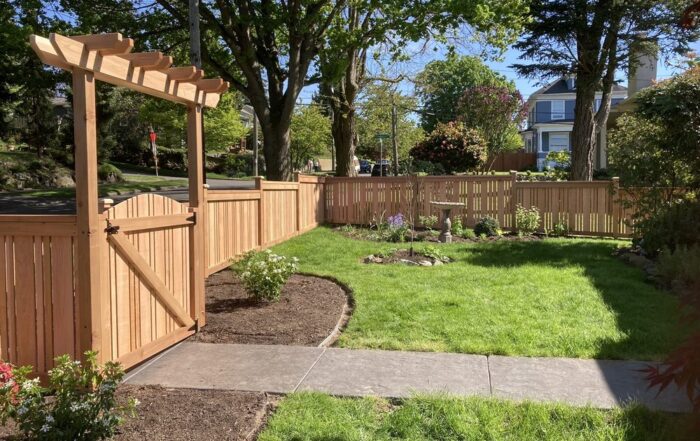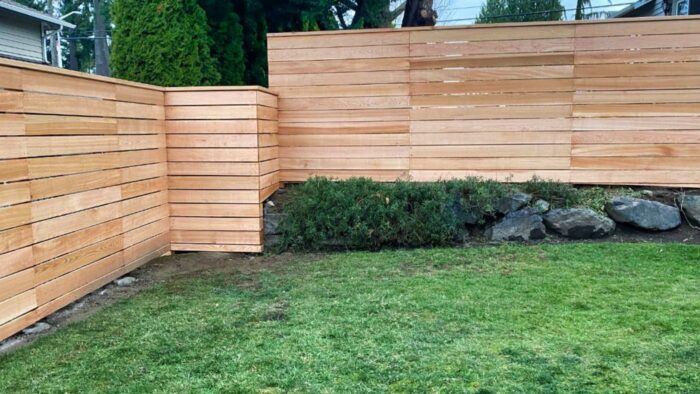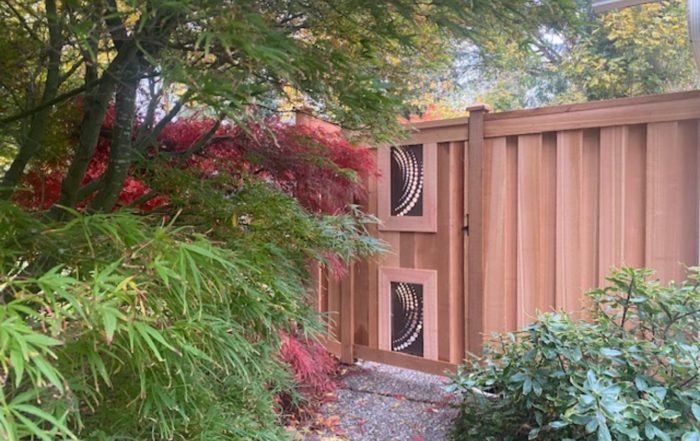Introduction
Washington State Fencing Essentials: Guidance from Seattle-based Specialists
Whether you’re a homeowner or property developer in the Emerald City, understanding Washington State fencing laws is crucial. It’s not just about marking boundaries; it’s about maintaining good relations with neighbors, navigating regulations, and staying on the right side of the law. At Sky Fence Company, we empower our Seattle community with knowledge to avoid common fencing mistakes. We provide locally sourced insights on boundary fencing, and building bridges in your neighborhood. Stick with us as we explore shared fencing pitfalls and guide you through Washington State regulations. Get savvy about your fences, Seattle!
Understanding Washington State’s Boundary Fencing Laws
In Washington State, the laws regarding boundary fences, also known as partition fences, are fair and ensure equal treatment for property owners. The key principle is shared responsibility, where neighbors are expected to share the cost and maintenance of a practical fence that serves purposes like privacy or security. Additional costs may apply if one neighbor desires a more elaborate fence for aesthetic reasons. It’s important to note that local regulations may take precedence over state laws, so consulting with a Washington State fencing professional is crucial for compliance and maintaining good neighborly relations. Explore our comprehensive guide to Washington State boundary fence regulations for more information.
Consequences of Uninformed Fence Decisions
At Sky Fence Company, we’ve seen it all when it comes to fencing faux pas. From the neighbor who thought a 10-foot high, neon pink fence was a great idea without consulting anyone, to the well-meaning homeowner who accidentally infringed on public land with their boundary fence. These are not just mistakes, but valuable lessons in the importance of communication, understanding, and adhering to Washington State’s fencing laws. We’ve assisted countless Seattle residents in resolving their fencing issues, all while cultivating a community spirit. Whether it’s advising on the appropriate height for partition fences, helping to navigate local regulations, or simply providing a listening ear in a neighborly dispute, our field experience has taught us the importance of helping our clients make the right decisions when it comes to their fencing needs.

1. Not Clarifying Ownership
The misconception of “My Side” vs. “Your Side”
Many homeowners have a common misconception about shared fences, believing in the notion of “my side” and “your side”. They often assume that the side facing their house is solely their responsibility, which may seem convenient for dividing painting or decorating tasks. However, it’s important to note that Washington State law sees fences straddling property lines as joint ownership. As a Seattle homeowner, effective communication with your neighbor and clarification of ownership is crucial before making any decisions regarding the fence. Remember, the boundary fence is not just “yours” or “theirs” – it’s a shared responsibility.
Importance of identifying joint ownership
Having a clear understanding of joint ownership is crucial for preventing disputes and promoting a harmonious neighborhood. Recognizing that you and your neighbor share ownership of the boundary fence fosters shared decision-making. Whether it’s repairs, upgrades, or aesthetic changes, it’s essential to consult both parties before taking any action. With joint ownership, it’s not about seeking permission, but rather reaching an agreement. This ensures the satisfaction of both parties and minimizes potential conflicts. So, before making any alterations to the partition fence, it’s advisable to have a friendly conversation with your neighbor. Remember, it’s not just about maintaining peace; it’s about respecting shared property and fostering good relationships with your neighbors. Ultimately, good fences contribute to good neighborly bonds!
2. Ignoring Maintenance Responsibilities
The Sole Responsibility Myth
In neighborhood disputes, it’s important to avoid the common mistake of assuming that fence maintenance is solely one person’s responsibility. Instead, it’s crucial to understand that according to Washington State law, shared fences have shared maintenance responsibilities. Both neighbors are equally accountable for fixing leaning posts, replacing damaged panels, and applying fresh paint. By maintaining a well-kept fence, not only will it enhance curb appeal, but it will also foster a harmonious neighborhood. Remember, it’s not a “you” or “me” situation, it’s an “us” situation that requires collaboration and shared responsibility.
Shared Care Philosophy
Adopting a ‘Shared Care Philosophy’ for boundary fences is crucial for maintaining good neighborly relations and ensuring proper fence maintenance. It promotes cooperation, mutual respect, and recognizing the fence’s importance to both parties. This includes regular inspections, timely repairs, and potential upgrades. By openly discussing matters, making joint decisions, and fairly sharing costs, adopting a shared care philosophy minimizes disputes and fosters a strong sense of community. Invest in a quality fence that not only brings neighbors together but also enhances the overall appeal and value of your property.
3. Building without Neighbor Notification
Prioritizing Open Discussions
Open communication is crucial for maintaining positive relationships with neighbors, especially when it comes to shared fences. Not only is it a matter of politeness, but it is also a legal requirement in Washington State. Neglecting this important aspect can lead to legal consequences and strain neighborly bonds. Moreover, fostering open communication promotes a sense of community, respect for one another’s rights and interests, and helps prevent misunderstandings. Prior to undertaking any tasks related to fences, it is highly recommended to engage in a friendly conversation with your neighbor. It’s the neighborly thing to do!
Legal Repercussions of Not Informing Neighbors
Neglecting to discuss your fencing plans with your neighbor is not only impolite but can also result in legal consequences. According to Washington State law, it is crucial to inform neighbors about any intended changes or construction of a partition fence. Failure to notify your neighbor could lead to legal troubles, including financial penalties and potential orders to modify or remove the fence at your own expense. In more severe cases, unresolved legal disputes might escalate to civil lawsuits, which not only drain your finances but also strain your relationship with your neighbor. Stay informed, communicate, and avoid unnecessary complications and conflicts.
4. Overlooking Local Regulations and HOA Rules
Navigating the Maze of Rules
Fencing regulations in Washington State can be complex and overwhelming. From city ordinances to community-specific rules, there are numerous laws governing the construction, modification, and maintenance of fences. These regulations encompass various aspects, including height, materials, and even aesthetic considerations to ensure a cohesive look within neighborhoods. In addition to city and state laws, homeowners’ association (HOA) rules also play a role in fencing regulations. Seattle homeowners must factor in all these rules when making changes to their boundary fencing. Complying with these regulations is not only about following the law but also about preserving the visual appeal and harmony of our communities. Explore our comprehensive guide to fencing regulations in Washington State for more information.
Understanding HOA Rules
HOA rules can sometimes feel restrictive, but they serve an important purpose in maintaining the appearance and organization of your community. These regulations cover aspects such as the color, height, and style of your fence, and failing to comply with them can result in penalties. Before making any modifications to your partition fence, it is crucial to consult your HOA’s guidelines. This step may seem like an inconvenience, but it can prevent future frustrations and potential fines. Remember, these rules exist to foster a harmonious and pleasant community environment for everyone’s benefit.
5. Erecting Spite Fences
Definition and examples of spite fences
“Spite fences” are physical structures or plantings, like fences, walls, or rows of trees, intentionally built or placed to annoy neighbors by blocking their view or access. For instance, a homeowner might construct an overly tall fence on the property line, obstructing sunlight or scenic views, or plant fast-growing trees encroaching on a neighbor’s property. While these actions may provide temporary satisfaction during disputes, they can lead to increased tensions and legal issues.
Why they are illegal and the penalties for erecting them
Spite fences, also known as “spiteful structures,” are explicitly prohibited in Washington State due to their potential to generate unnecessary disputes and infringe upon the rights of neighbors. These contentious structures, often considered acts of harassment, cause significant annoyance or detriment without any discernible beneficial purpose.
Erecting a spite fence can have severe consequences, such as substantial fines and court-ordered dismantling at the violator’s expense. Furthermore, it may result in expensive civil lawsuits filed by the aggrieved neighbor, which not only disrupts the harmony within the community but also strains relationships among residents. Given these potential ramifications, it is strongly advised to explore diplomatic avenues for resolving disputes and maintaining a cordial neighborhood atmosphere, fostering a sense of unity and understanding.
By prioritizing open communication and mutual respect, we can work towards fostering a harmonious living environment where differences are resolved amicably, without resorting to spiteful actions that only breed animosity and resentment.
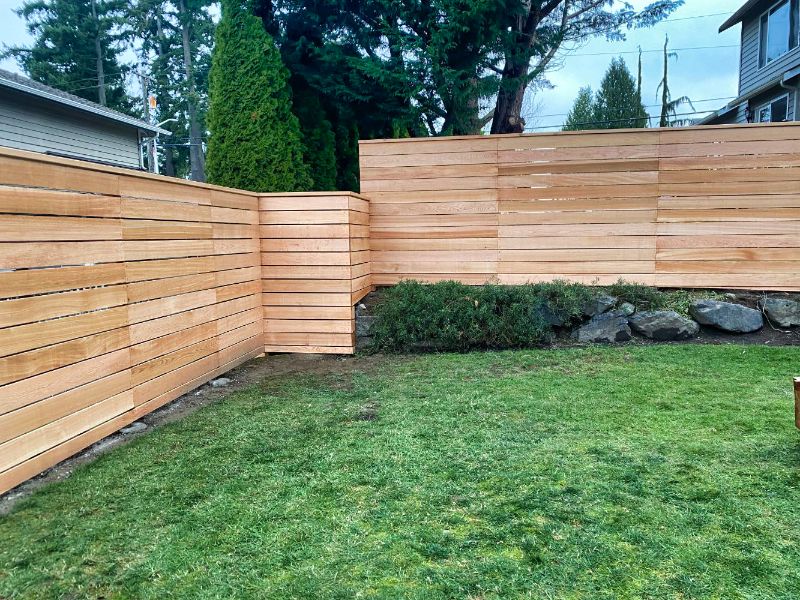
6. Neglecting Proper Fence Etiquette
How neglecting etiquette can lead to disputes
Neglecting proper fence etiquette can lead to serious disputes between neighbors. These conflicts often arise from a lack of communication, such as failing to discuss plans for a new fence or not consulting each other about necessary repairs. Additionally, encroaching plants or tree limbs can strain neighborly relations and even result in legal battles. In Washington State, where laws about partition fencing are stringent, neglecting etiquette can lead to costly consequences. To maintain peaceful and cooperative neighborhood relationships, it’s important to prioritize open communication, respect shared boundaries, and adhere to the principles of good fence etiquette.
Tips for maintaining good neighborly relations
Maintaining good neighborly relations when it comes to fencing is crucial. Here are a few tips to help you keep the peace:
- Communicate: Always talk to your neighbor before making any changes to a shared fence. Keep them in the loop about your plans, from the type of fence to the timeline for construction.
- Cooperate: If a fence needs repair, work with your neighbor to address the issue. Sharing the cost of repairs can avoid a lot of tension.
- Respect Boundaries: Make sure that any landscaping or construction doesn’t encroach onto your neighbor’s property. It’s essential to respect the agreed-upon boundaries.
- Follow Rules: Always adhere to local regulations, HOA rules, and Washington State laws regarding fencing. Ignoring these can lead to legal issues and strained relationships.
- Be considerate: Simple acts of consideration can go a long way. For example, if you’re having a new fence installed, try to schedule the work at a time that won’t be disruptive to your neighbors.
Remember, when it comes to boundary fencing, being a good neighbor is about more than just following the law, it’s about fostering a sense of community and mutual respect.
7. Failing to Inspect and Repair
The hazards of a deteriorating fence
A deteriorating fence can pose various hazards that homeowners often overlook. It can be a safety concern, with loose boards, splintering wood, and rusty nails potentially causing harm to people and pets. Moreover, an unmaintained fence can negatively impact curb appeal, potentially decreasing the value of your home and the properties in your neighborhood. Additionally, a weakened fence can compromise security, making your home vulnerable to intruders and wildlife. In Washington State, where adverse weather can accelerate fence deterioration, neglecting regular inspections and necessary repairs can lead to these problems and more. Remember, maintaining your boundary fencing is not just about aesthetics; it’s vital for safety, security, and community responsibility. Don’t underestimate the importance of proper fence maintenance!
How regular check-ups can prevent bigger problems
Regular fence check-ups can prevent future problems. By conducting periodic inspections, you can identify and address minor issues before they become major concerns. For example, if you notice a loose board, it’s important to repair it promptly to avoid a larger section of the fence collapsing. Performing regular maintenance tasks such as staining and sealing can also extend your fence’s lifespan, protect it from harsh weather conditions in Washington State, and save you from expensive replacements later on. Remember, a well-maintained fence not only enhances your property’s appeal but also provides security and defines your boundaries, fostering positive neighbor relations. Don’t neglect the upkeep of your fence—it’s crucial for its longevity and your peace of mind.
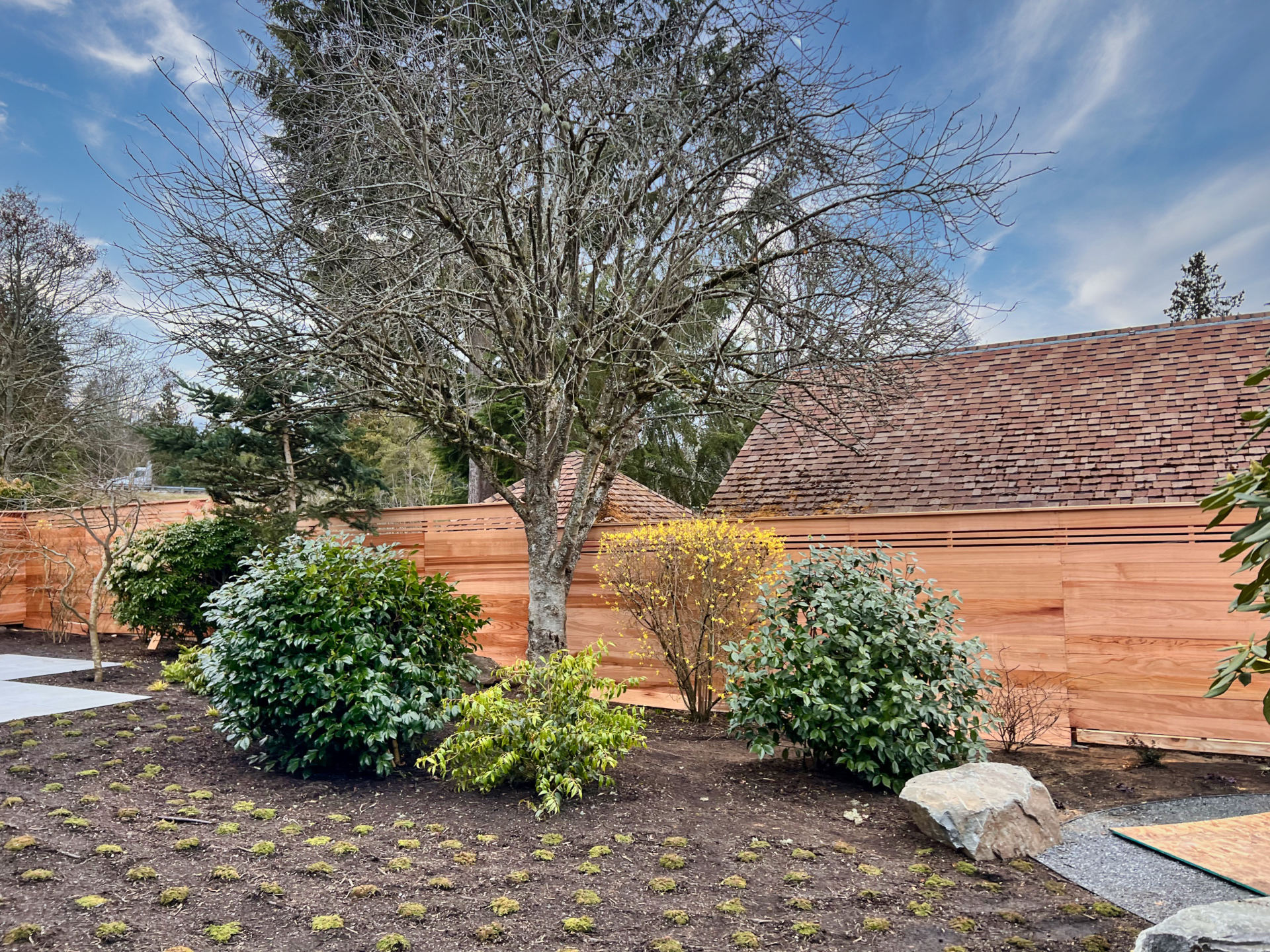
8. Disregarding Tree Trimming Rules
How trimming a neighbor’s tree can lead to disputes
Trimming a neighbor’s tree without permission can escalate into a dispute. While overhanging branches may be a nuisance, it’s important to respect your neighbor’s property rights. In Washington State, improper tree trimming can have legal implications and strain relationships. Prioritize open communication and understanding of tree trimming rules to avoid disputes and potential damages.
Best practices for tree maintenance near shared fences
Maintaining good relationships with neighbors and avoiding disputes when it comes to tree maintenance near shared fences is crucial. Here are a few key steps to follow:
- Open communication: It’s important to have a conversation with your neighbor if tree branches are causing any issues on your property.
- Understand your rights and responsibilities: In Washington State, you generally have the right to trim branches that overhang your property. However, it’s crucial to do so carefully without harming the tree.
- Seek professional advice: Certified arborists can provide valuable guidance on proper tree trimming techniques, helping you avoid any unintended damage.
- Respect your neighbor’s property: Always obtain permission before entering their property and ensure that debris from the trimming is promptly cleaned up.
Remember, maintaining a harmonious relationship with your neighbors is built on respect and consideration. By adhering to these best practices, you can preserve good neighborly relations while effectively managing tree maintenance near shared fences.
9. Not Consulting Professionals
Why DIY isn’t always the best approach
When it comes to fence installation or repair, the DIY approach may be tempting. However, it’s important to consider the benefits of hiring professional fence builders. With their expertise, years of experience, and knowledge of regulations, materials, and techniques, professionals ensure a secure, compliant, and durable fencing solution. Avoid the potential long-term costs and time investment of a poorly installed fence. Trust the professionals who have the right tools and can provide peace of mind. Choose professional fence builders for your project.
The value of professional advice and installation
When it comes to fencing, seeking professional advice and installation services is invaluable. Experienced professionals will guide you in choosing the right materials and designs while ensuring compliance with Washington State fencing codes. They will also utilize proper installation techniques to enhance your fence’s durability and protect it from unpredictable weather conditions. Moreover, professional services often come with warranties, providing you with peace of mind. While the initial cost of professional fencing may be higher than DIY, the long-term benefits in terms of quality, compliance, and cost savings make it a wise investment. Opt for professional fencing to maintain your property effectively and foster good relations with your neighbors. Contact us today for expert fencing solutions!
10. Making Assumptions about Livestock Containment
The unique challenges of fencing in rural areas
Rural areas pose unique challenges for livestock containment and fencing. Clear and secure boundaries are crucial for your animals’ safety in the vast expanses of land. Unlike urban settings, rural fences must withstand the pressure of larger livestock, like horses and cattle, necessitating a robust solution. Maintaining fence integrity is crucial to prevent livestock straying and potential damage to neighboring properties. Rural fences should also consider local wildlife movement without posing a hazard. In Washington State, specific regulations apply to rural fencing based on livestock type and land nature, adding complexity to installation and upkeep. Fencing in rural areas ensures safety, compliance, and coexistence, going beyond marking boundaries.
Livestock Containment and Fencing Regulations in Washington State
Livestock owners in Washington State must adhere to clear regulations regarding livestock containment and fencing. These laws prioritize the safety of both livestock and the general public, as well as protect property. It is the responsibility of livestock owners to ensure that their animals are securely enclosed within their property lines. Failure to do so can result in the owner being held liable for any damages caused by their animals straying onto public or private land.
Different regulations apply depending on whether the area is fenced or open range. In rural areas, sturdy fencing suitable for livestock is required. Non-compliance with these regulations can lead to penalties. It is crucial for livestock owners in Washington State to have a thorough understanding of these laws and to comply with them. Consulting a professional fence builder can be beneficial in achieving compliance and ensuring the safety of both livestock and the community.
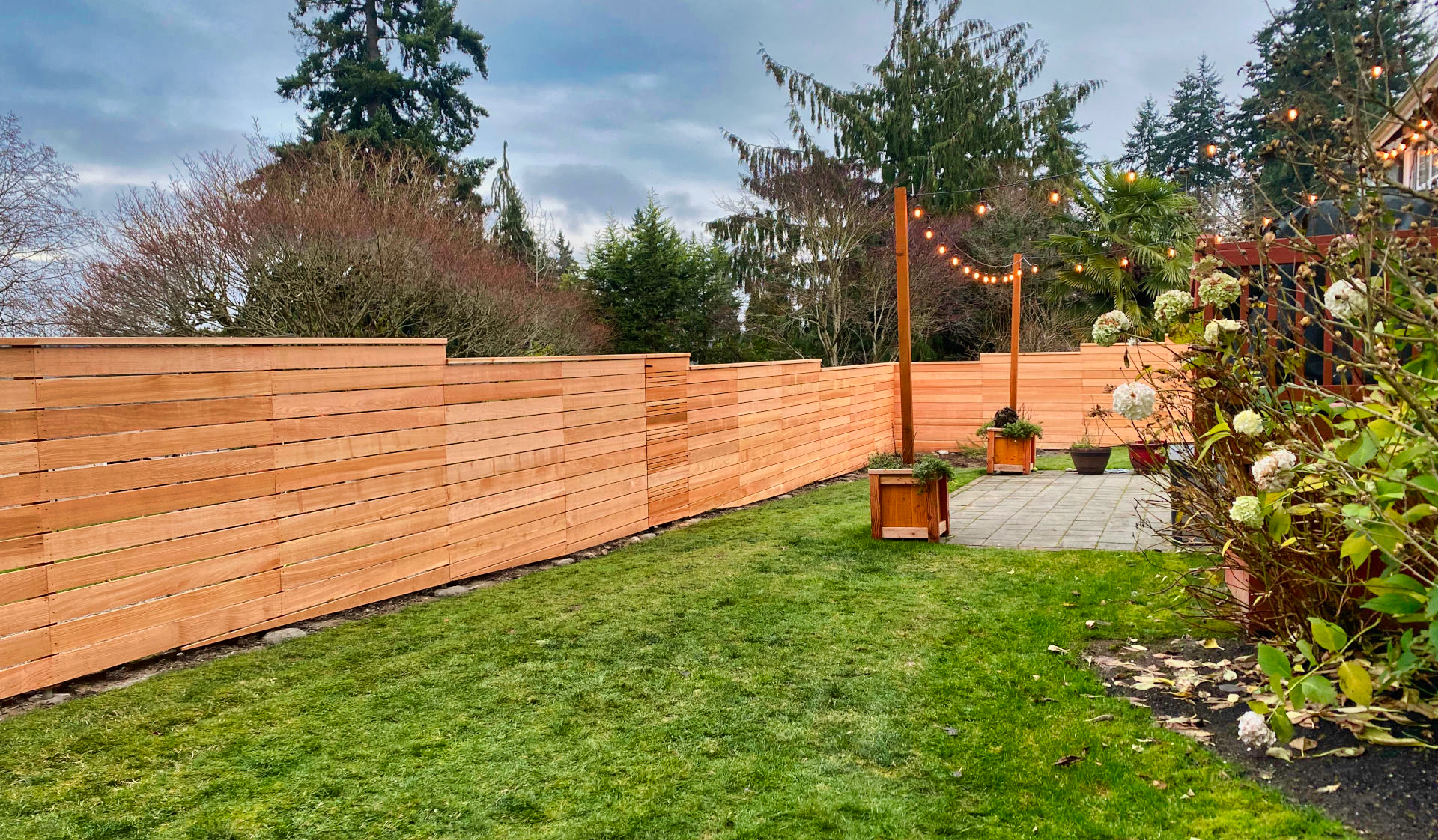
11. Not Seeking Mediation in Case of Disputes
Why jumping to litigation isn’t the best first step
Jumping straight into litigation when facing fencing disputes may not always be the best course of action. Legal proceedings can be expensive, time-consuming, and strain neighbor relationships. Instead, consider mediation as an initial step. Mediation involves a neutral third party who facilitates discussion and helps neighbors find a mutually beneficial resolution. This process promotes open communication, understanding, and respect, often leading to sustainable solutions without resorting to court interference. It’s important to explore all possible avenues of peaceful resolution before considering legal action to maintain good neighborly relations.
Benefits of seeking a neutral mediator
When it comes to resolving fencing disputes, opting for a neutral mediator offers various advantages. A mediator fosters open dialogue, promoting understanding between parties and working towards a mutually agreeable outcome. This process not only strengthens neighbor relations but also saves time and resources, as mediation is often quicker and more cost-effective than litigation. Moreover, mediators possess expertise in local laws, including Washington State fencing regulations, ensuring fair and legally sound solutions. By engaging a mediator, you demonstrate a commitment to a peaceful resolution, emphasizing the importance of harmonious coexistence in our neighborhoods. Experience the benefits of seeking a neutral mediator for fencing disputes today.
Conclusion
In summary, staying informed and maintaining open lines of communication are key to avoiding many of the common mistakes made with shared fencing in Washington State. Knowledge is power – understanding local fencing regulations, the benefits of professional installation, the unique challenges of rural fencing, and the responsibilities of livestock containment, can save you headaches in the long run. Communication, too, is pivotal. Whether it’s with professional fence builders, with your neighbors, or even a neutral mediator, remember that dialogue is the cornerstone of harmonious coexistence and resolution. Let’s avoid these common mistakes by being proactive, informed, and communicative. Remember, a good fence makes good neighbors. So, let’s build not just good but great fences together!
Frequently Asked Questions
What regulations govern fencing in Washington State?
Fencing in Washington State is governed by specific laws that prioritize the safety of both the public and livestock, and protect property. Different regulations apply depending on whether the area is urban or rural, fenced or open range. Livestock owners are responsible for ensuring their animals are securely enclosed within their property lines. Non-compliance can lead to penalties.
What are the benefits of professional fence installation?
Professional fence installation ensures compliance with local fencing codes, the use of proper installation techniques, and enhanced durability of your fence. Despite the initial higher cost than DIY, the long-term benefits in terms of quality, compliance, and cost savings make it a wise investment.
What is the role of a neutral mediator in fencing disputes?
A neutral mediator facilitates open dialogue between parties in a dispute, working towards a mutually agreeable outcome. This process strengthens neighbor relations and saves time and resources. Mediators also possess expertise in local laws, ensuring fair and legally sound solutions.
What are the unique challenges of rural fencing?
Rural fencing must withstand the pressure of larger livestock and consider local wildlife movement. Maintaining fence integrity is crucial to prevent livestock straying and potential damage to neighboring properties.

